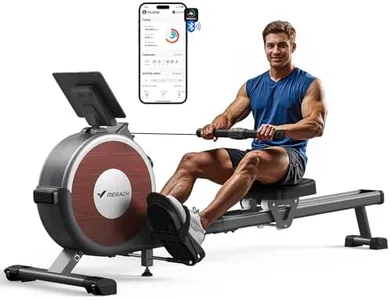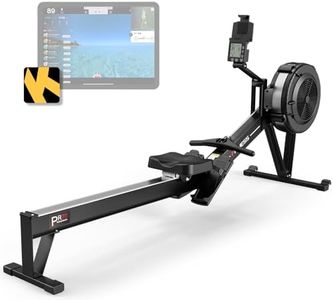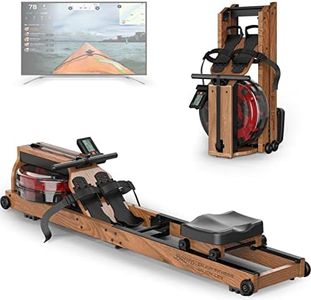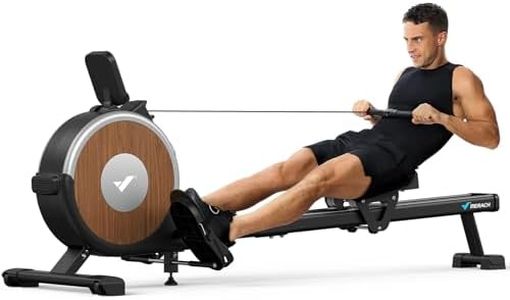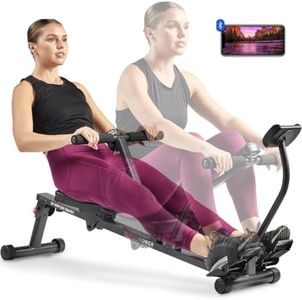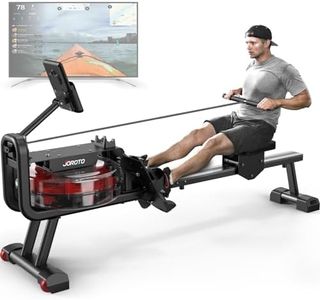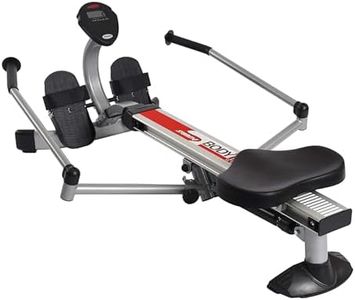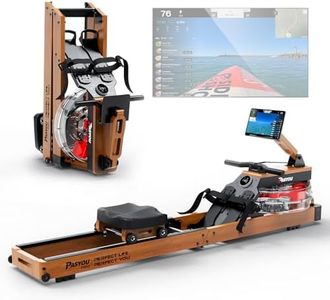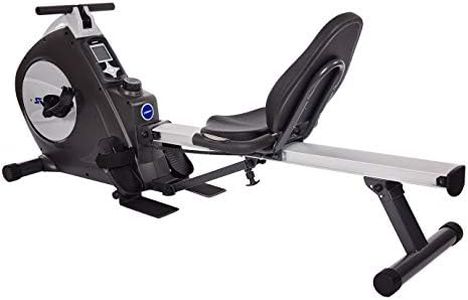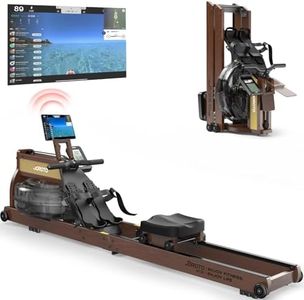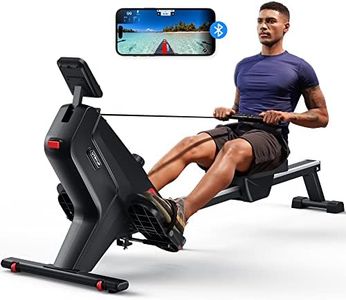We Use CookiesWe use cookies to enhance the security, performance,
functionality and for analytical and promotional activities. By continuing to browse this site you
are agreeing to our privacy policy
10 Best Foldable Rowing Machine
From leading brands and best sellers available on the web.By clicking on a link to a third party's website, log data is shared with that third party.
Buying Guide for the Best Foldable Rowing Machine
Choosing a foldable rowing machine is a fantastic way to make home fitness accessible without sacrificing space. The goal is to find a piece of equipment that fits comfortably in your living area, meets your exercise goals, and suits your physical needs. Because foldable rowing machines come in various designs and with different features, having a clear understanding of their key specifications will help you feel confident that your pick will give you effective workouts and store away with ease when not in use.Folding MechanismThe folding mechanism describes how the rowing machine folds up for storage. This is important for people with limited space, as a machine that's easy to fold and unfold makes post-workout cleanup quick and hassle-free. There are generally two big types: vertical fold where the rail lifts up, and center-fold where the machine bends in the middle. If your space is tight or awkwardly shaped, look for a model that folds into the smallest possible footprint—some users prefer machines that stand upright, while others need them to fit under a bed or in a closet. Test the folding process if possible—choose a rower you can easily manage alone.
Resistance TypeResistance type determines how hard it is to pull the handle and influences the feel of your workout. Common types are air, magnetic, water, and hydraulic. Air and water offer a natural, smooth feel that many rowers enjoy, and their resistance increases as you row harder. Magnetic is quieter and allows you to adjust resistance manually. Hydraulic is often in smaller machines and saves space, but can feel less smooth. If you want a gym-like experience, look at air or water. For quiet operation, magnetic is best. If you have very limited space or want light exercise, hydraulic may work well.
Size and Weight CapacityThe size of the rowing machine—both when in use and folded—affects where you can put it and how comfortable you'll be using it. Weight capacity indicates how much weight the machine can safely handle. This spec matters for your comfort, safety, and the machine's durability. For compact spaces, measure your available area and compare it to the dimensions. For weight capacity, check that it's well above your own weight (including any workout gear), and opt for higher limits if possible, as they often reflect sturdier construction.
Monitor/Display FeaturesThe monitor or display tracks things like time, distance, strokes, and calories. A good monitor helps you follow your workouts and stay motivated. Basic displays show only time and stroke count, while more advanced ones can connect to apps or even include interactive programs. Decide what's important for you: If you love data and tracking progress, a more advanced panel is worth seeking out; if you just need a timer, a simple screen is fine.
Seat and Handle ComfortSeat and handle comfort refers to how the rowing machine feels in use, especially during longer workouts. A cushioned, contoured seat helps avoid discomfort, and an ergonomic, non-slip handle prevents blisters and hand fatigue. If you're planning on longer sessions, invest in comfort—seek out machines with padded seats and easy-to-grip handles. If you'll row less frequently or for short periods, basic comfort features may be enough.
Noise LevelNoise level describes how loud the rower is when in use. This is important if you live with others, have thin walls, or like to listen to music or watch TV as you exercise. Air and water resistance tend to be louder, while magnetic and hydraulic are quieter. If a peaceful workout environment is a priority, lean towards magnetic resistance, but if realism is more important than sound, air or water may suit you best.


